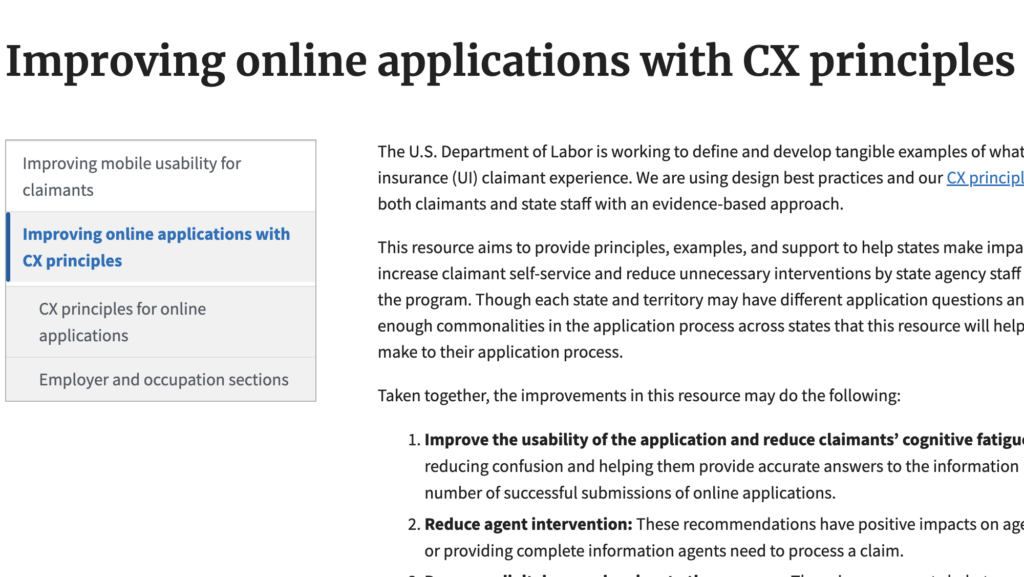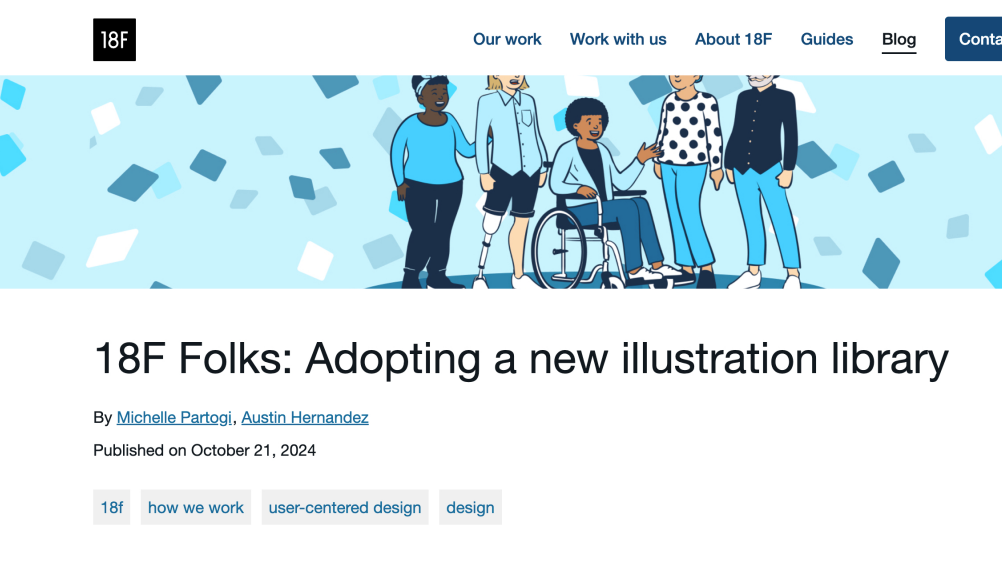This resource contains principles and examples of high-impact improvements to consider making in different parts of the online application. CX principles for online applications describes broadly applicable best practices that when implemented across the various sections of an online application can increase claimant self-service and reduce the need for interventions from state agency staff. The employer and occupation sections highlight promising improvements within these sections to collect employment history, reason for filing for unemployment (separation information), and a claimant’s occupation. Gathering the information for these sections is particularly complex for claimants and state agencies alike.
Content related to this resource:
The document outlines customer experience (CX) principles for improving unemployment insurance (UI) applications, emphasizing user-centered design, accessibility, and clear communication. It provides actionable guidelines for state agencies to create more efficient, equitable, and user-friendly UI systems, aiming to reduce barriers and improve outcomes for claimants.
The document provides guidance and best practices for improving the clarity and accessibility of initial unemployment insurance (UI) application instructions. It emphasizes the importance of using plain language, clear formatting, and user-centered design to help claimants understand and complete applications accurately, ultimately reducing errors and improving the customer experience.
The document from the U.S. Department of Labor outlines best practices for improving the "Personal Information" section of unemployment insurance applications to enhance user experience. It emphasizes simplifying language, minimizing required fields, and providing clear guidance to help applicants accurately and efficiently complete this section.
The document discusses the importance of collecting employer and occupation information during the unemployment insurance (UI) application process to improve program integrity, data quality, and customer experience. It highlights how accurate employer and occupation data can help states detect fraud, better understand labor market trends, and design more effective workforce programs.



